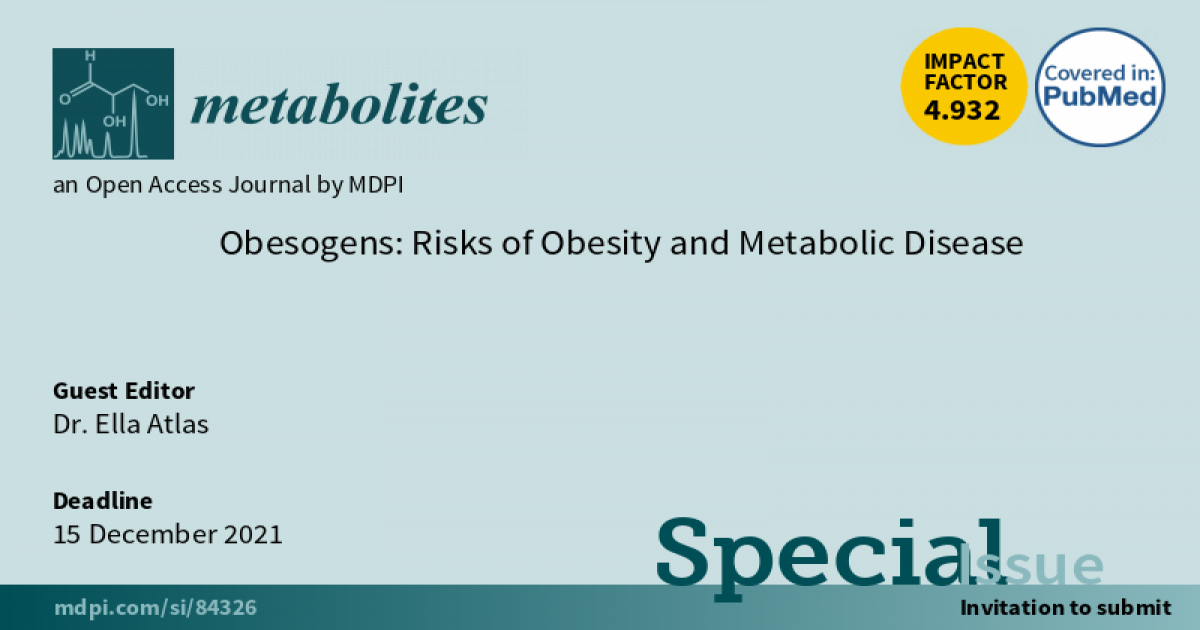Obesogens: Risks of Obesity and Metabolic Disease
A special issue of Metabolites (ISSN 2218-1989). This special issue belongs to the section "Endocrinology and Clinical Metabolic Research".
Deadline for manuscript submissions: closed (15 December 2021) | Viewed by 11169

Special Issue Editor
Interests: the effects of chemicals on fat cell formation; adipogenesis; phenotype of the mature fat cells; carcinogenic effect of chemicals on the mammary gland in 3D models; mammary epithelial cells; hepatic toxicity in 3D models
Special Issue Information
Dear Colleagues,
Metabolic disorders including obesity and type 2 diabetes are on the rise worldwide. Currently, more than half of adults in Western countries are overweight, and of these, more than ten percent will develop type 2 diabetes. The etiology of these metabolic disorders is multifactorial and includes genetic predisposition, overnutrition, and a sedentary lifestyle. However, over the last decade, more and more evidence has accumulated to show a link between exposure to chemicals, i.e., environmental pollutants, and the development of metabolic disease. The term “obesogen” was first added to the list of endocrine-disrupting chemicals more than a decade ago. Obesogens are metabolic-disrupting chemicals that increase adipose tissue formation and thus increase obesity. Since the term “obesogen” was coined, it has become apparent that these chemicals can affect glucose homeostasis, pancreas insulin release, hepatic function, and more. In this Special Issue, we will explore the evidence linking exposure to obesogens and the development of obesity and metabolic dysfunction.
Dr. Ella Atlas
Guest Editor
Manuscript Submission Information
Manuscripts should be submitted online at www.mdpi.com by registering and logging in to this website. Once you are registered, click here to go to the submission form. Manuscripts can be submitted until the deadline. All submissions that pass pre-check are peer-reviewed. Accepted papers will be published continuously in the journal (as soon as accepted) and will be listed together on the special issue website. Research articles, review articles as well as short communications are invited. For planned papers, a title and short abstract (about 100 words) can be sent to the Editorial Office for announcement on this website.
Submitted manuscripts should not have been published previously, nor be under consideration for publication elsewhere (except conference proceedings papers). All manuscripts are thoroughly refereed through a single-blind peer-review process. A guide for authors and other relevant information for submission of manuscripts is available on the Instructions for Authors page. Metabolites is an international peer-reviewed open access monthly journal published by MDPI.
Please visit the Instructions for Authors page before submitting a manuscript. The Article Processing Charge (APC) for publication in this open access journal is 2700 CHF (Swiss Francs). Submitted papers should be well formatted and use good English. Authors may use MDPI's English editing service prior to publication or during author revisions.
Keywords
- obesogen
- type 2 diabetes
- insulin
- obesity
- adipocytes
- pancreas
- liver
Benefits of Publishing in a Special Issue
- Ease of navigation: Grouping papers by topic helps scholars navigate broad scope journals more efficiently.
- Greater discoverability: Special Issues support the reach and impact of scientific research. Articles in Special Issues are more discoverable and cited more frequently.
- Expansion of research network: Special Issues facilitate connections among authors, fostering scientific collaborations.
- External promotion: Articles in Special Issues are often promoted through the journal's social media, increasing their visibility.
- e-Book format: Special Issues with more than 10 articles can be published as dedicated e-books, ensuring wide and rapid dissemination.
Further information on MDPI's Special Issue polices can be found here.






